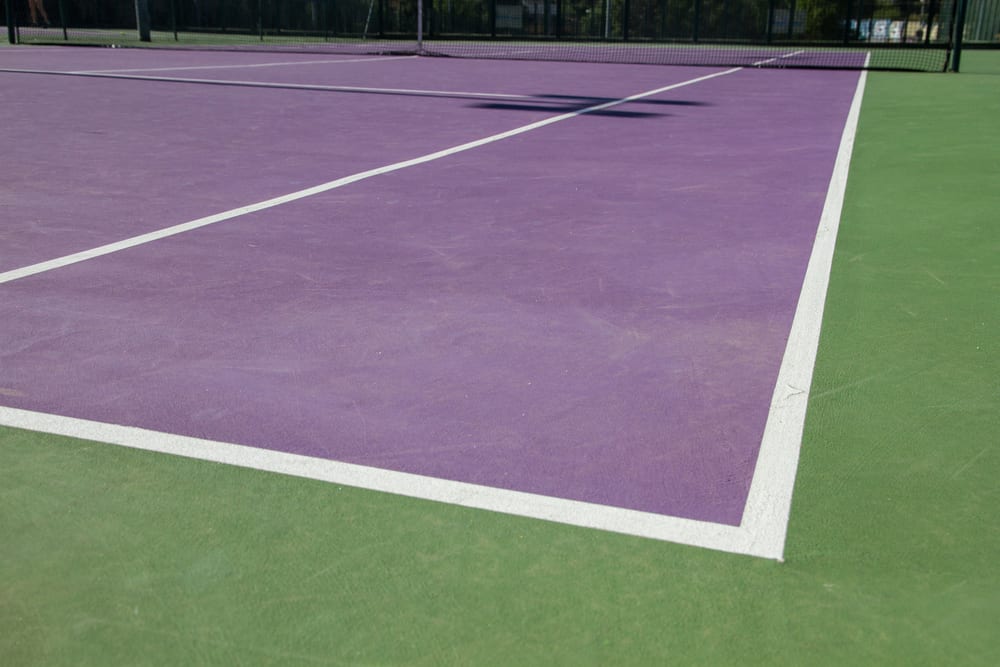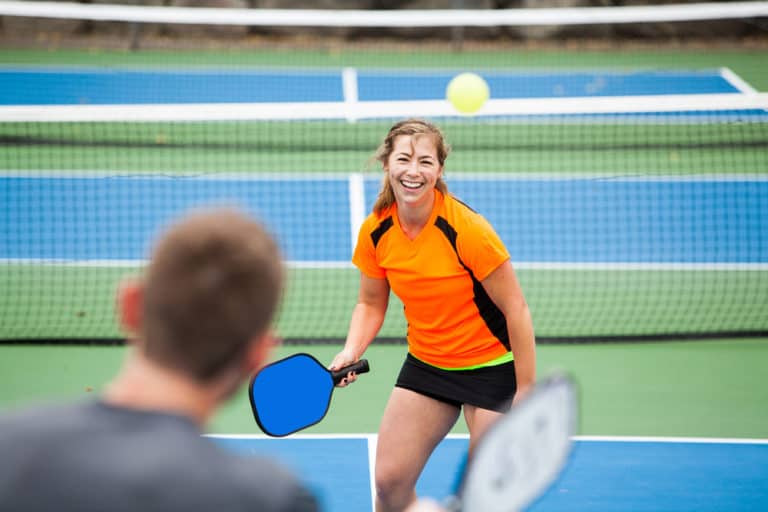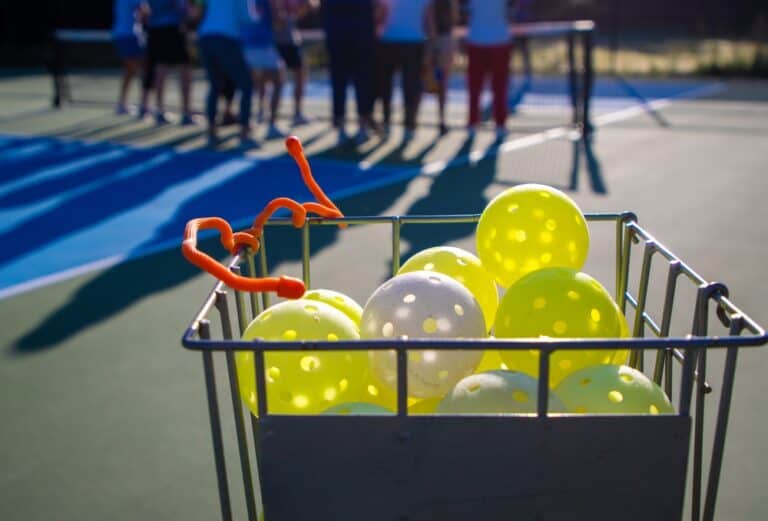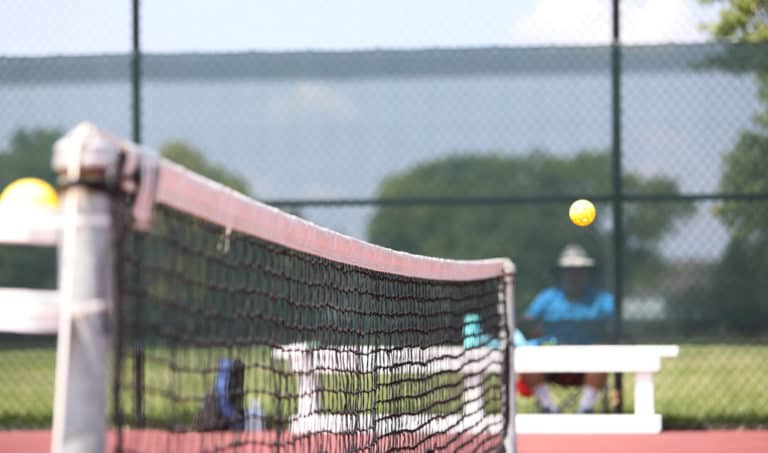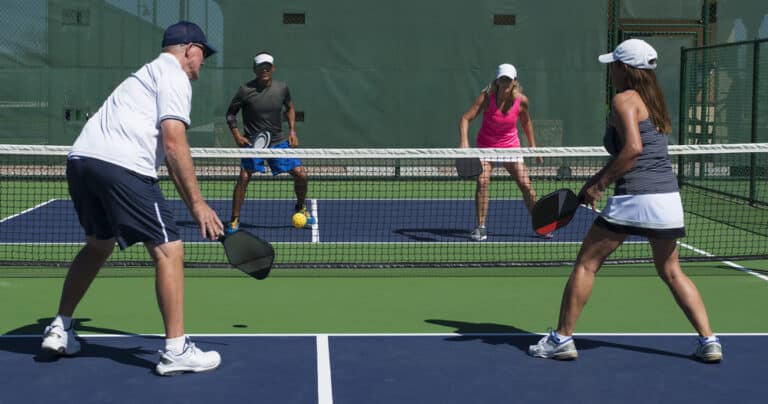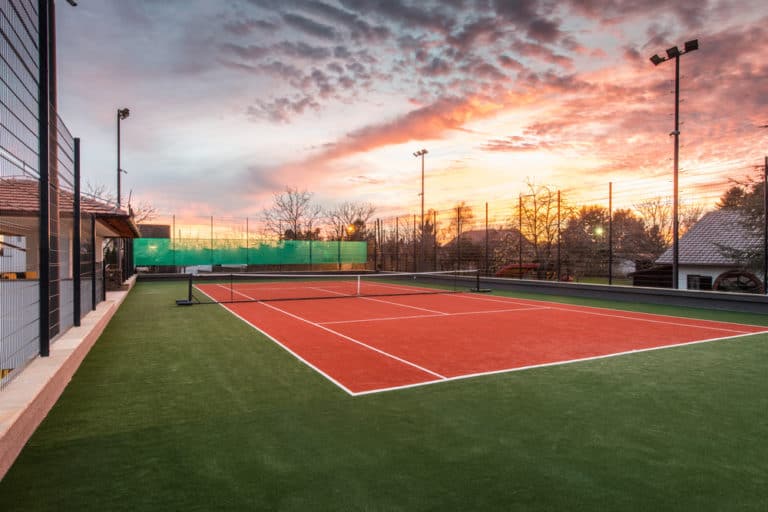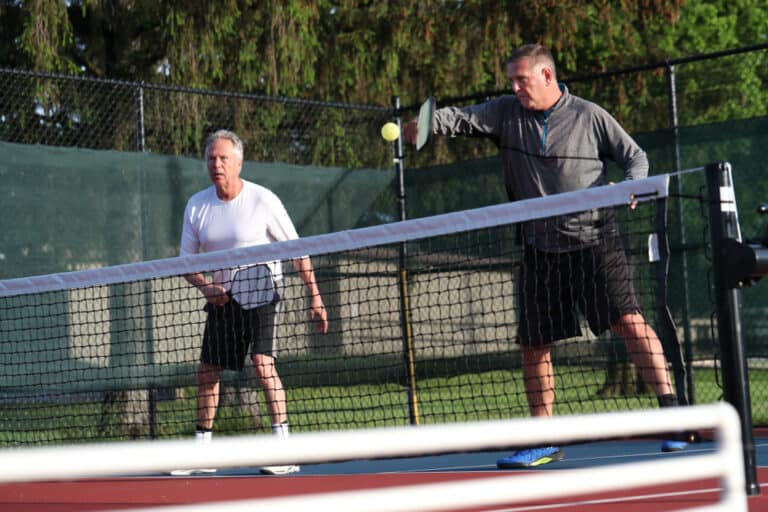What Is The Best Surface To Play Pickleball On?
Who would have thought that after three friends invented a game to entertain their children in 1965, fifty-seven years later, the game would have grown to the point where 4.2 million people play it every year in more than 30,000 courts across America?
The best Pickleball court surface to play on is a Pro-Cushion Surface. If this is not practical, ten types of court surfaces can be used for a pickleball court. The surface must be level, smooth, consistent, provide good traction and grip while being durable.
If you are in the market to build a pickleball court, several factors will inform your choice. Will it be an indoor or outdoor facility, how much space you have available, your budget, how often you will play, and what surface will work best for you?
The Best Surface To Play Pickleball On
Six available surfaces can be used to build a pickleball court. These are
- A Pro-Cushion surface.
- Concrete.
- A tennis court.
- Clay.
- Asphalt.
- Polyurethane sports surfaces, with or without cushioning.
- Grass.
A Pro-Cushion Surface
A Pro-Cushion surface is an option on which to play Pickleball. This type of surface provides a comfortable surface, which minimizes shock and strain on the knees, hips, and other joints of Pickleball players.
Players prefer to play on a Pro-Cushioned surface because it enables a quicker recovery time, and after-game, aches, and pains are reduced significantly.
A pro-cushion surface uses an acrylic coating, incorporating flexible acrylic granules or coarse rubber particles that provide cushioning.
The Main Strengths Of A Pro-Cushion System Are
- The system cushions the impact on players’ joints.
- The surface provides another layer of protection for the player. If players fall, they are far less likely to suffer abrasions or injuries.
- They are very smooth surfaces.
- The payers get good traction and grip.
- They are durable and long-lasting without needing regular repairs.
- Players report that it feels good to play on a Pro-Cushion system.
- It looks professional.
The Weaknesses Of A Pro-Cushion Surface Are
- The ball moves differently to a hard concrete surface
- The ball moves more slowly, which can throw off a person who is used to playing on a more rigid surface.
- Due to the cushioning effect, players who are used to playing on a more rigid surface may find it unsettling; they may be temporarily unsteady on their feet until they get used to the pro-cushion surface.
- Although the surface is durable, it is not as strong as concrete. There have been instances where heavier players have broken through the surface and left damage on the court.
- The surface is the most expensive cost of a pickleball court. Pro- Cushion surfaces are the most costly of all the available materials.
The Most Used Material Is Concrete
Not only are concrete surfaces cheaper, but they also provide the most predictable ball movement.
Although concrete is a rigid hard material, you can cover it with a specialized surface designed for tennis, Pickleball, and badminton courts.
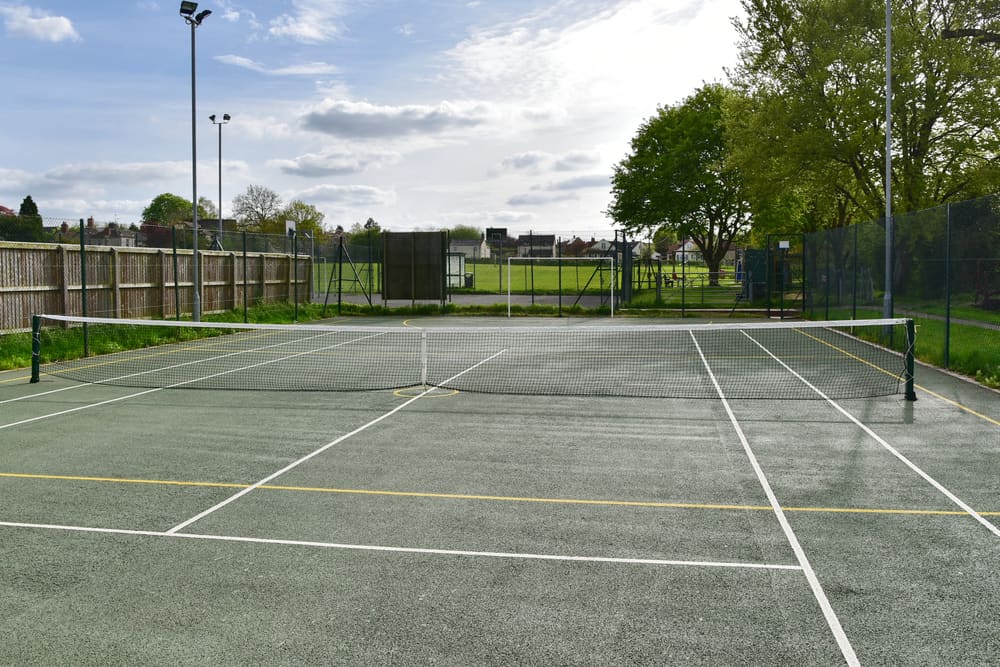
The Advantages Of Using Concrete Are
- A professional contractor can lay perfectly level concrete with no undulations or other defects on the surface.
- You can overlay concrete with a specialized surface, which can increase the grip for the player.
- Specialized rubber matting can be laid over a concrete surface to increase the cushioning to protect the player’s joints.
- Concrete is very hardy and durable. A correctly laid concrete slab will withstand years of abuse and continue to provide a solid surface.
The Disadvantages Of Concrete Are
- In its natural state, concrete is rigid and inflexible. Unless a second material is placed on top, the players’ joints will feel the difference the next day.
- Concrete does not provide the necessary traction without an additional layer on top.
You Can Play Pickleball On A Tennis Court
If you have a tennis court at home, your school, club, or community center, you can lay out temporary lines and erect a Pickleball net.
If you have permission to use a tennis court in this way, it is ideal because the surface is already in place and is designed for a racquet ball game.
The surface provides sufficient traction for the fast-moving game of Pickleball.
The only disadvantage to using a tennis court is that the pickleball lines will have to be temporary and must be removed if the tennis court is going to be used for its originally designed purpose.
Grass Surfaces Are Suitable To Play Pickleball
The grass is not typically used as a court surface. For a grass surface to be used, it will need to be especially prepared. Preparations will include
- You will have to level the ground perfectly; this is easier said than done
- Once level, the grass must be compacted to provide a sufficiently hard surface.
- The grass will have to be carefully looked after and mowed regularly.
- The grass must be played on very frequently, or else it will lose the features which make it a suitable Pickleball surface.
- The lines defining the pickleball court will have to be regularly reinstated, as with regular mowing, they will disappear.
- Grass does not provide the same level of traction as solid surfaces.
- The bounce of a ball can be erratic on a grass surface.
You Can Play Pickleball On A Clay Surface
Although it is possible, like grass, it is not commonly used as a pickleball court surface.
The clay surface needs to be firm and compacted. Remember, being clay; if it rains, the surface will absorb the water and lose the consistent level of the surface,
Conclusion
Although Pickleball was first designed and played in a backyard, it has evolved into the nationally played sport it is today.
The best surface to play Pickleball on is a Pro-Cushion material with concrete covered by a specialized layer following in a close second.

